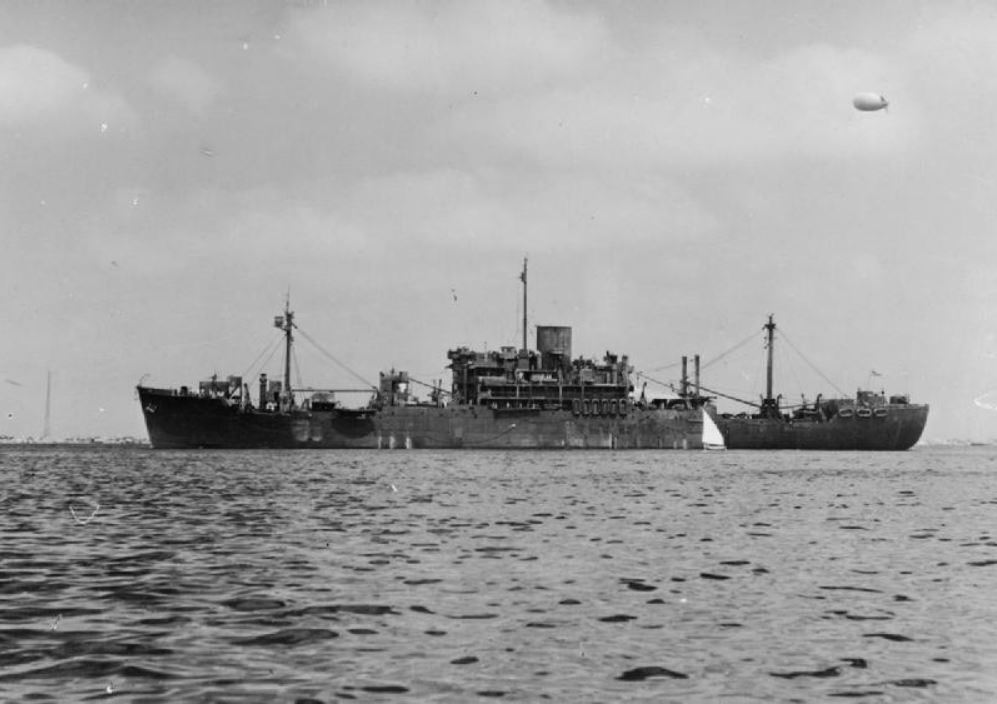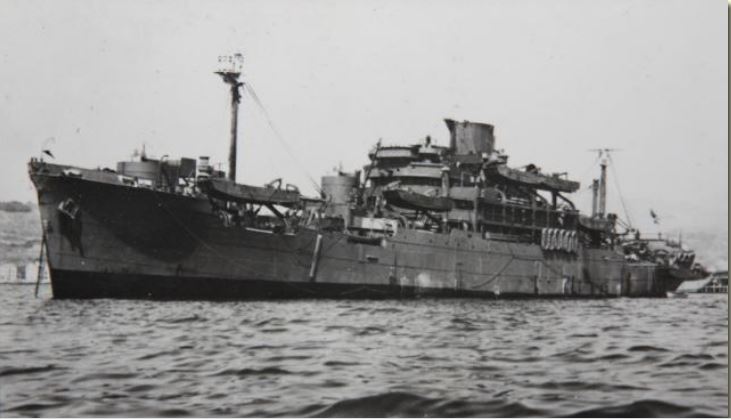Difference between revisions of "HMS Glengyle"
From Our Contribution
(→Soldiers carried) |
(→Labuan, North Borneo to Brisbane 23 November - 3 December 1945) |
||
| (One intermediate revision by the same user not shown) | |||
| Line 29: | Line 29: | ||
==Remarks== | ==Remarks== | ||
| − | In 1938, whilst Glengyle and her sisters, Glenearn, Glenroy, and Breconshire were being built, the British military determined that they would be ideal for infantry landing ships. The Admiralty acquired Glengyle shortly after her launch on 21 Oct 1939, and she was converted into a fast supply ship. During April and June 1940, she underwent further conversion into an infantry landing ship capable of transporting an embarked force of up to 34 officers and 663 other ranks and carrying 12 Landing Craft Assault (LCAs) | + | In 1938, whilst ''Glengyle'' and her sisters, ''Glenearn, Glenroy'', and ''Breconshire'' were being built, the British military determined that they would be ideal for infantry landing ships. The Admiralty acquired ''Glengyle'' shortly after her launch on 21 Oct 1939, and she was converted into a fast supply ship. During April and June 1940, she underwent further conversion into an infantry landing ship capable of transporting an embarked force of up to 34 officers and 663 other ranks and carrying 12 Landing Craft Assault (LCAs) and one Landing Craft Mechanised (LCM). Armed with three twin 4-inch guns and numerous short-range AA weapons. |
| − | She participated in the Bardia raid on 19-20 Apr 1941, and a few days later was involved in the evacuation of more than 4,000 troops from Greece. In early May she carried another 3,000 to Crete. In late May she assisted in the evacuation of 6,000 British troops from Crete. | + | She participated in the Bardia raid on 19-20 Apr 1941, and a few days later was involved in the evacuation of more than 4,000 troops from Greece. In early May she carried another 3,000 to Crete. In late May she assisted in the evacuation of 6,000 British troops from Crete. In June 1941 she assisted with the Syria-Lebanon campaign against Vichy French forces, and in early 1942 she became involved in convoys to resupply Malta. ''HMS Glengyle'' (disguised as a tanker) participated in the Dieppe Raid before returning to the Mediterranean where she was engaged in the 1943 invasion of Sicily, and landings at Anzio on the Italian mainland. A refit in Liverpool preceded her transporting the 5th Airborne Division to Bombay, before transporting the 3rd British Commando Regiment to Japan shortly after the war ended. |
| − | Transferred to the Australian Naval Board in November 1945, she landed a garrison in Singapore and was involved with the repatriation of Australian troops from South-East Asia. In January 1946 she transported Australian Garrison troops to Kure in Japan before returning British POWs home from Manila. Glengyle was returned to the Glen Line on 17 Jul 1946, and following a refi re-entered service in March 1948. Transferred to the Blue Funnel Line in October 1970, she was renamed ''Deucalion'', but was sold for scrap soon after. | + | Transferred to the Australian Naval Board in November 1945, she landed a garrison in Singapore and was involved with the repatriation of Australian troops from South-East Asia. In January 1946 she transported Australian Garrison troops to Kure in Japan before returning British POWs home from Manila. ''Glengyle'' was returned to the Glen Line on 17 Jul 1946, and following a refi re-entered service in March 1948. Transferred to the Blue Funnel Line in October 1970, she was renamed ''Deucalion'', but was sold for scrap soon after. |
| Line 49: | Line 49: | ||
===Labuan, North Borneo to Brisbane 23 November - 3 December 1945=== | ===Labuan, North Borneo to Brisbane 23 November - 3 December 1945=== | ||
* [[Raymond Victor Clough]] | * [[Raymond Victor Clough]] | ||
| + | * [[Thomas Keith Donald]] | ||
===Balikpapan to Brisbane 15 - 23 December 1945=== | ===Balikpapan to Brisbane 15 - 23 December 1945=== | ||
Latest revision as of 20:27, 2 July 2024
Contents
Remarks
In 1938, whilst Glengyle and her sisters, Glenearn, Glenroy, and Breconshire were being built, the British military determined that they would be ideal for infantry landing ships. The Admiralty acquired Glengyle shortly after her launch on 21 Oct 1939, and she was converted into a fast supply ship. During April and June 1940, she underwent further conversion into an infantry landing ship capable of transporting an embarked force of up to 34 officers and 663 other ranks and carrying 12 Landing Craft Assault (LCAs) and one Landing Craft Mechanised (LCM). Armed with three twin 4-inch guns and numerous short-range AA weapons.
She participated in the Bardia raid on 19-20 Apr 1941, and a few days later was involved in the evacuation of more than 4,000 troops from Greece. In early May she carried another 3,000 to Crete. In late May she assisted in the evacuation of 6,000 British troops from Crete. In June 1941 she assisted with the Syria-Lebanon campaign against Vichy French forces, and in early 1942 she became involved in convoys to resupply Malta. HMS Glengyle (disguised as a tanker) participated in the Dieppe Raid before returning to the Mediterranean where she was engaged in the 1943 invasion of Sicily, and landings at Anzio on the Italian mainland. A refit in Liverpool preceded her transporting the 5th Airborne Division to Bombay, before transporting the 3rd British Commando Regiment to Japan shortly after the war ended.
Transferred to the Australian Naval Board in November 1945, she landed a garrison in Singapore and was involved with the repatriation of Australian troops from South-East Asia. In January 1946 she transported Australian Garrison troops to Kure in Japan before returning British POWs home from Manila. Glengyle was returned to the Glen Line on 17 Jul 1946, and following a refi re-entered service in March 1948. Transferred to the Blue Funnel Line in October 1970, she was renamed Deucalion, but was sold for scrap soon after.
Armament:
3 × QF 4inch Mk XVI Twin
2 × 2 pounder Mark VII Quad
12 × 20mm Mark I IA II Single

